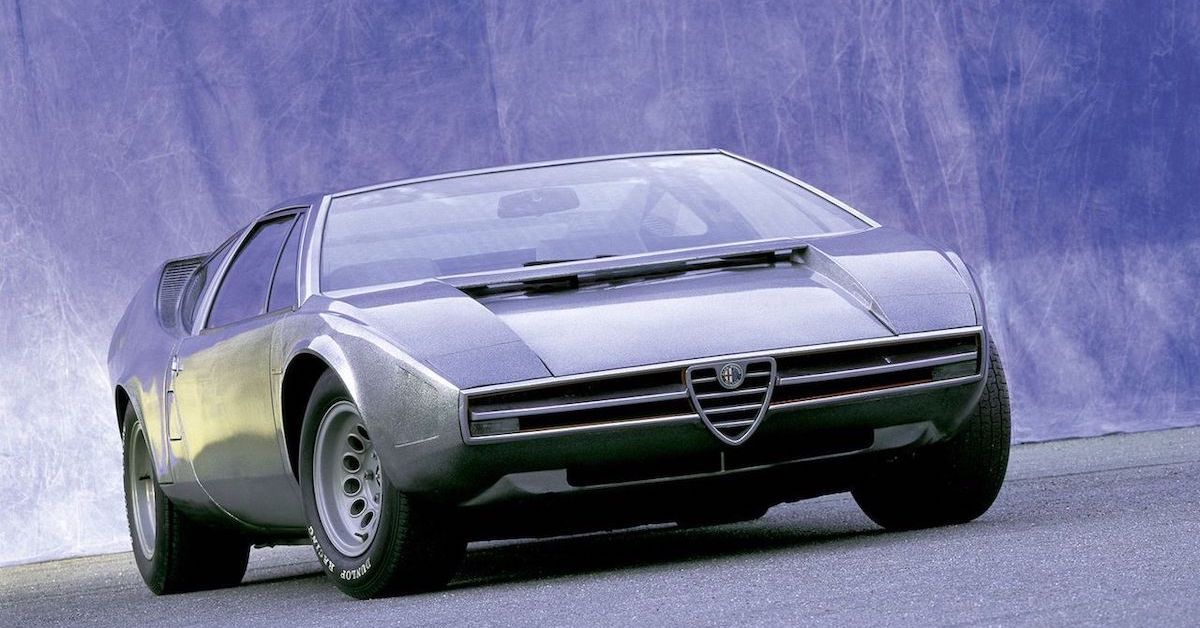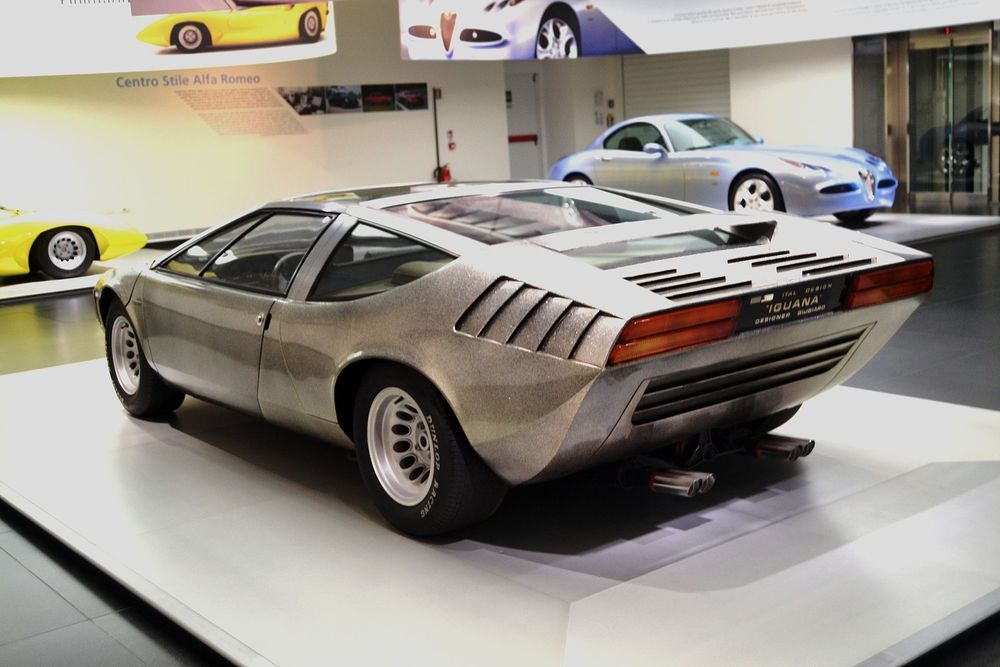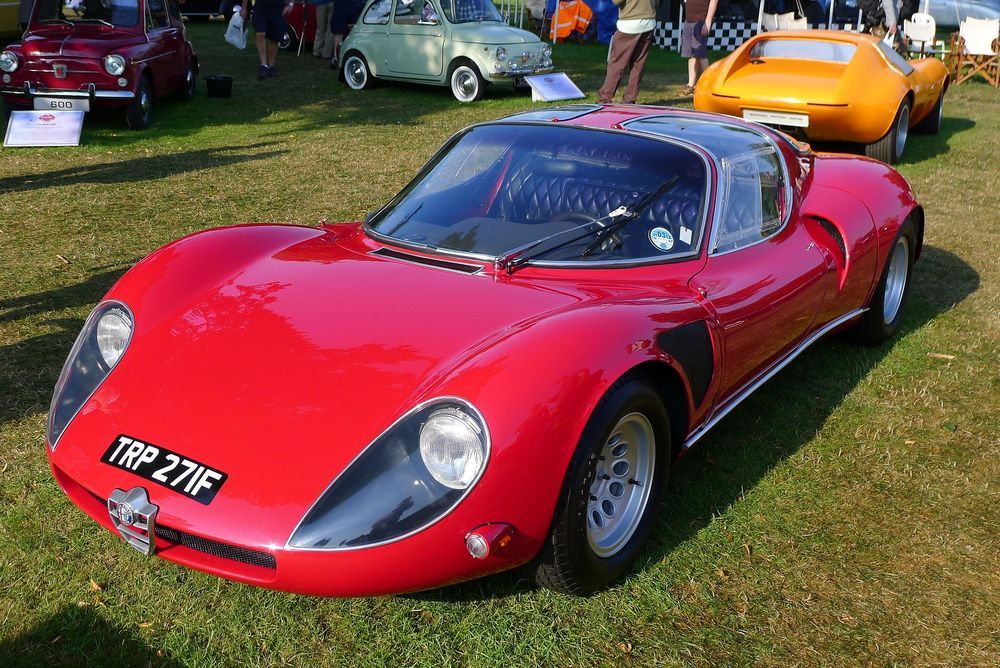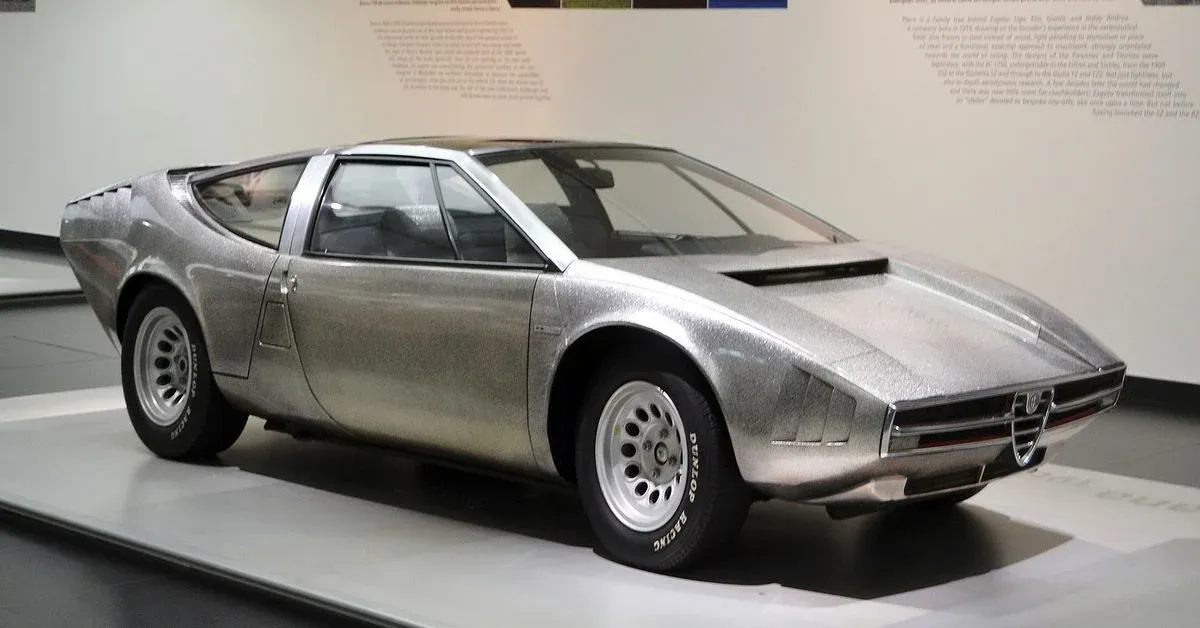Alfa Romeo (now a subsidiary of Stellantis) has been known for Italian luxury automobile manufacturing since their original founding under the name “Anonima Lombarda Fabbrica Automobili” back in 1910. The company has built up their brand to represent not only class and top of the line European cars, but also in the endurance and touring car race arenas, where they hold many victories, championships, and records.
Over the course of their life, the company has introduced many concepts, some of which were incredibly influential even without making it to production. One of these concepts was the Alfa Romeo Iguana. Created in 1969, the futuristic car was designed by Giorgetto Giugario of Italdesign and based on the Alfa Romeo 33 Stradale.
Although the Iguana never made it to official production, its style was incorporated into many designs by Giugario later on, including some very famous models. Alfa Romeo might have missed out by skipping production on this beauty, but it helped to set the pace for some of their championship winning cars produced later.
Let’s take a closer look at the Alfa Romeo Iguana and its intriguing story!
History Of The Alfa Romeo Iguana
Although the Iguana never became a production car, even as a concept, it was incredibly influential and had a unique history and intriguing effect on car designs to follow. Initially designed in 1969, it was the work of Giorgetto Guigario, who based the car on the road-ready version of the Alfa Romeo 33 Stradale Tipo 33/2.
The Iguana is able to boast being the first of many history-making designs to come from Guigiaro while he worked under the studio ItalDesign, which was just beginning to come to light during that time. Despite entrance by the Stradale into competition in 1967, and the car winning its first race and several to follow, it was never a popular car.
Although a series of 50 was planned, less than half were created and just eighteen were actually built. This left many chassis for use elsewhere, and Alfa Romeo determined that they could be used better if they were given over to some of Italy’s most well-known designers. One of which was the up and coming ItalDesign.
Guigiaro created the Iguana on that base chassis and introduced it at the 1969 Turin Motor Show.
The initial design saw the car with a metal flake gray body and brushed metal (stainless steel, specifically) roof frame and cabin pillars. The result was a stylish, futuristic look when combined with the pointed front and rear end and aerodynamic lines of the body of the Iguana.
After several photo shoots and many showings, the car evolved away from the concept model and was used as the base model for several other production cars.
The Alfa Romeo Iguana's Specs And Influences
The Iguana’s chassis (“borrowed” from the leftovers of the Stradale) was a tubular steel version, and the fuel tank was rubber lined. The body was drafted in fiberglass and had a low sloped front end and nose. The deeper windshield and raised wheel cut-outs were a new design that was later incorporated into both the Maserati Bora and the Porsche Tapiro. The rear end definition and elements were also later used in other cars designed by Guigiaro, such as the Alfetta GT.
The brushed stainless steel look on parts of the body was a design that Giugiaro later used on the popular DMC DeLorean, which was suited for the futuristic concept and coloring. The DeLorean went on to be used as a time machine in the Back to the Future series of movies. Other designs by Giugiaro in the 1970s also made reference to this design, including the Maserati Merak. Both the Maserati Bora and Merak look similar enough to the original Iguana that they could be brighter-colored siblings. They featured similar design elements in the body, including the pinched nose and cut out wheel space, as well as a very recognizable rear end.
The Iguana was equipped with a 121.7 cubic inch V8, aluminum engine that was capable of up to 266.9 horsepower. However, in order to increase reliability, the final version was tuned down to only deliver 230 horsepower at 8,000 rpm. The V8 in the Iguana was paired with a SPICA fuel injection system and a six-speed manual transmission with Colotti gearbox. It could reach speeds up to 161.6 MPH.
Despite never reaching production or being used in the long-standing legacy of racing that is held by Alfa Romeo, the Iguana concept car has made its mark in the history of the company and in the world of cars by influencing many other design elements in cars that did make it to production and even into film during the era that followed. Without the Iguana, some iconic rides would not exist in the form that they are known for today.




